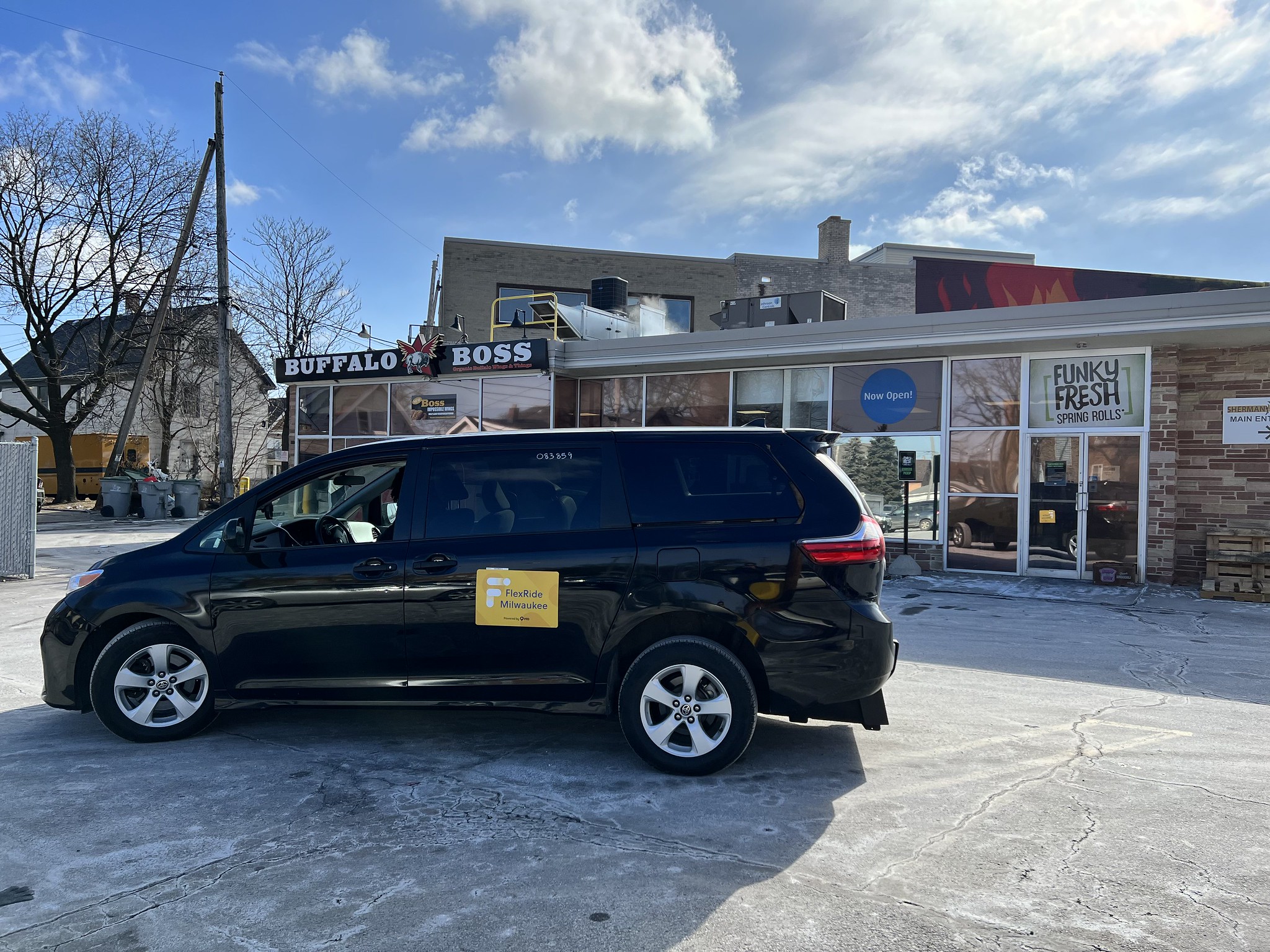Milwaukee is getting urban residents to suburban jobs through an innovative project funded by the American Rescue Plan and a state workforce development grant.
Waukesha County, Wisconsin, located directly West of Milwaukee County, is home to the central offices of major corporate employers like Kohl’s, GE Healthcare, and Harley-Davidson Motor Co. Its suburban and exurban households earn, on average, almost twice the annual income of Milwaukee residents. And while Waukesha County boasts its own airport and a convenient 20 minute drive from downtown Milwaukee on I94, until recently it was almost impossible for workers to take public transportation from homes in the city to corporate parks and manufacturing facilities beyond the Milwaukee County limits.
To solve this transportation problem, non-profit organization MobiliSE worked with local partners to launch FlexRide Milwaukee, a public-private partnership that offers free and $1.50 rides between Milwaukee and suburban Employment Zones.
Successful pilot led to longer-term solution
In 2022, the University of Wisconsin Milwaukee (UWM) and Southeastern Wisconsin Regional Planning Commission piloted FlexRide as an on-demand service to transport Milwaukee residents to their jobs in Menomonee Falls and Butler, Waukesha County. Initially, the program was available to residents and employers by application only, funded by a $1 million National Science Foundation grant. During the pilot, 59% of riders who expressed interest in using FlexRide were unemployed, evidence of the spatial mismatch between where low-income workers were living and working.
Within the pilot year, the program had 101 unique riders and attracted significant employer support. In July 2022, the program was extended and expanded under the leadership of MobiliSE using a $4.2 million grant from the American Rescue Plan, disbursed as a Workforce Innovation Grant through the Wisconsin Economic Development Corporation and the state’s Department of Workforce Development. Riders no longer need to apply to use the service.
MobiliSE continues to lead the initiative, and contracts rides through Via Transportation, an on-demand public transit software provider. FlexRide’s coverage area has since expanded, and the program is thriving. “We’ve served around 12,000 rides since FlexRide launched in March 2022! Around 4,000 rides were completed during the first phase of the pilot program, and more than 7,600 rides have been completed since it was extended. We continue to see strong ridership growth month to month,” said Alex Lavoie, Via’s Chief Operating Officer.
Via hires drivers locally, most of whom provide their own vehicles. The company requires prospective drivers to pass drug and alcohol testing, anti-discrimination training, disability awareness and sensitivity training, driver app training, and safe driving requirements. The company provides wheelchair accessible vehicles at customer request. Riders must be 13 years old or older and can digitally hail a vehicle using the mobile app Monday-Friday 4:30am-11:30pm.
Recommendations for implementation in your community
- Partnerships. MobiliSE and the region’s Chamber of Commerce are led by engaged boards representing some of the area’s largest employers. These partnerships are critical to identify where there is transit demand, and to create and execute efficient solutions.
- User-Centered. In their initial Civic Innovation Challenge Grant application, UWM researchers asked, “How well does the user-centered approach overcome barriers and solve a regional-level spatial mismatch?” During the pilot, participants reported a 25% reduction in commute travel time, helping ensure the success of the program.
- Build on existing infrastructure. FlexRide’s pickup zones are along the Milwaukee County Transit System’s bus routes, extending transit access beyond FlexRide’s When identifying FlexRide’s pickup and dropoff point options, the team focused on aligning their coverage with existing bus routes to give customers access to expanded transit resources beyond their coverage areas.



